THIS IS MY RIFLE

THIS IS MY RIFLE
USMC Basic Rifles
*All of these rifles fire .556 rounds.
M16A3 - (Third Generation - Alpha 3)
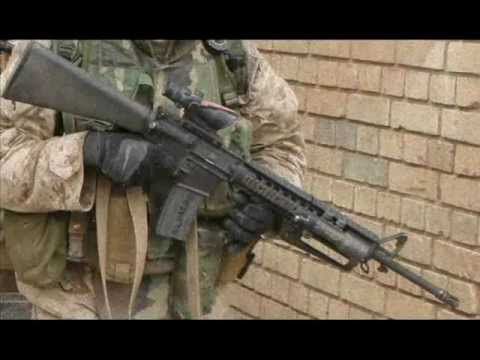
M4
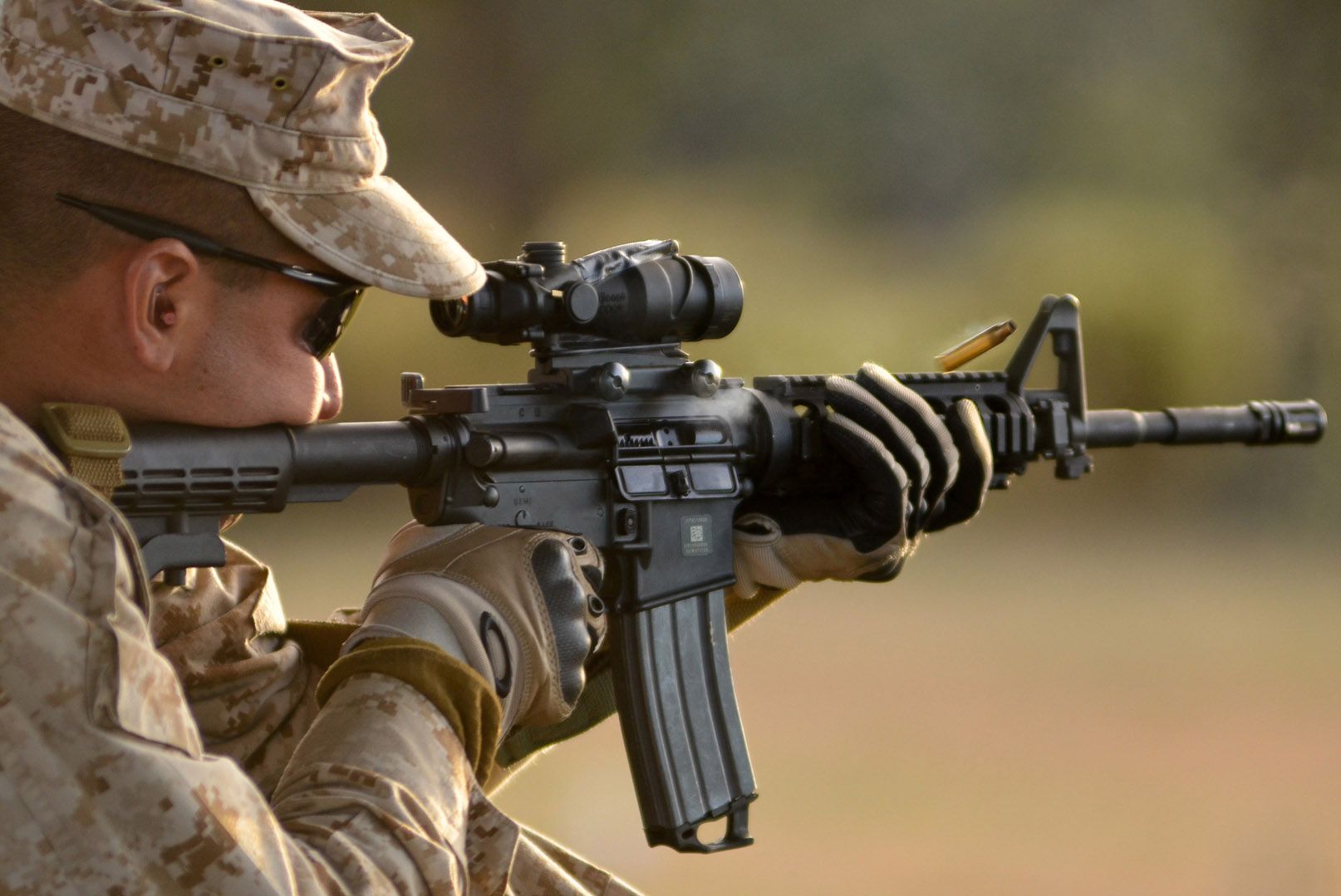
M39 DMR - (Designated Marksman Rifle - Fire Team/Platoon Snipers)
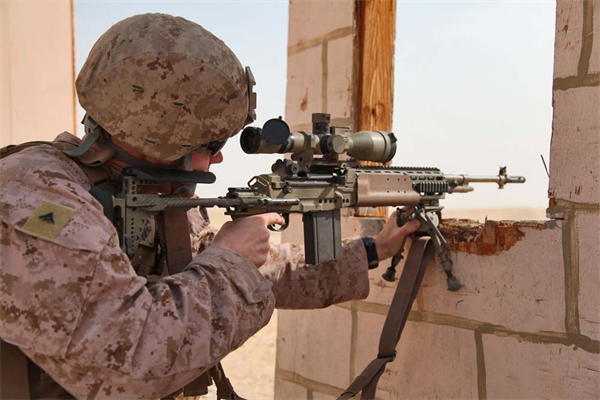
M27 IAR - (Infantry Assault Rifle)
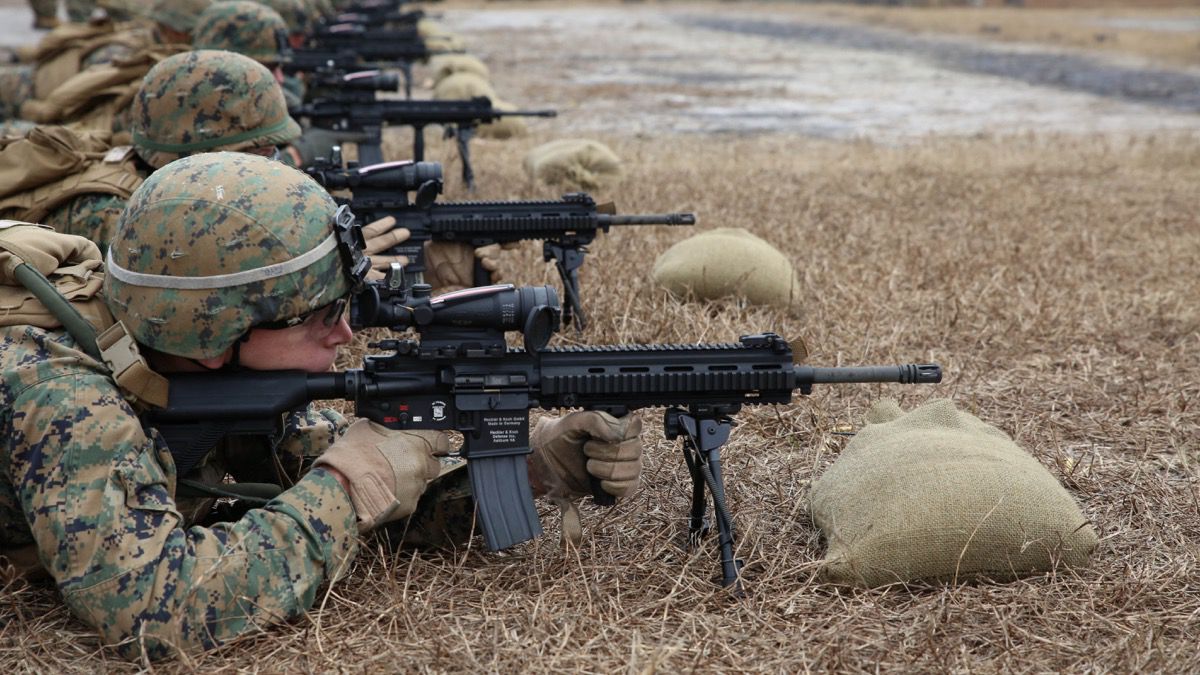
Just about everyone is familiar with the United States Marine Corps Riflemen's Creed (Prayer). While we certainly aren't asking you to memorize this creed or name/sleep with your rifle, there is a portion of the creed that I believe we ought to follow and understand.
"I will learn its (rifle) weakness, its strength, its parts, its accessories, its sites and its barrel.
I will keep my rifle clean and ready, even as I am clean and ready."
Before you step onto the field to take part in any exercise or engagement you MUST KNOW THAT YOUR RIFLE IS READY AND IN WORKING ORDER.
We call it "Red Con One", meaning that one round is locked into the chamber, safety off, and you are "Cleared Hot To Engage!"
1) Make sure all of your Magazines (not clips) are full.
2) Make sure your batteries for your, Peq box (*infra red laser) are fully charged and all of your externals are working properly.
* I will be doing a chapter solely related to NODs (Night Optic Devices)
3) Make sure your rifle is clean and functioning properly (Charging Handle, Magazine Release, Dust Cover is closed)
4) Make sure to brass check the weapon and the Selector are set to safety before and after transport to and from the Area of Operation (AO).
4) Make sure any pistol or sidearm is serviced
(NOTICE - A 'Gun' is a chain fed weapon or any Artillery. A rifle or Pistol should never be called a gun.)
Likewise, it is your responsibility to know your rifle, how it works, what it can and cannot do, and what you the student can make it do! That is the most important part of this. WHAT CAN YOU MAKE THAT RIFLE DO!
"I must master my rifle as I master my life. My rifle, without me, is useless. Without my rifle, I am useless."
With everything in this manual especially the first three chapters, perfect practice makes perfect. What we want to try and achieve is muscle memory and coordination that would allow the riflemen to fire with both right and left hands.
Below is the Diagram of the M4 Carbine. Note the parts as they will be referred to going ahead in this chapter.

RIFLE CARRY
There are four basic carries that we will be going over in this portion of chapter two, 1) Controlled Carry, 2) Alert Carry 3) Ready Carry, and 4) Tactical Carry. (CART)
All of these have a specific purpose and can prevent muzzle sweeping, friendly fire, and accidental discharge that can really anger a teammate or squad member, and result in punitive action.
As a result, I thought it necessary to talk about these carriers for better safety and tactical reasons.
1) CONTROLLED CARRY – This carry is to be used when no immediate threat is present. The weapon's safety is on. And as seen in the picture, the muzzle of the rifle is pointing down, away from the body just outside the feet. You want the Buttstock to be between nipple to armpit level, and maintain a firm grip on the pistol grip with your firing hand. Your trigger finger will be placed on the receiver of the rifle, away from the trigger.

2) TACTICAL CARRY – Like the controlled carry, it is another version of a non-threatening scenario. The buttstock is placed into the hip area, with both hands on the rifle. The firing hand and trigger finger are the same placement as the CONTROLLED CARRY, and the support hand is cupping the bottom rail (handguard). The Muzzle is angled upwards at a 45˚ angle away from the middle of the team column.
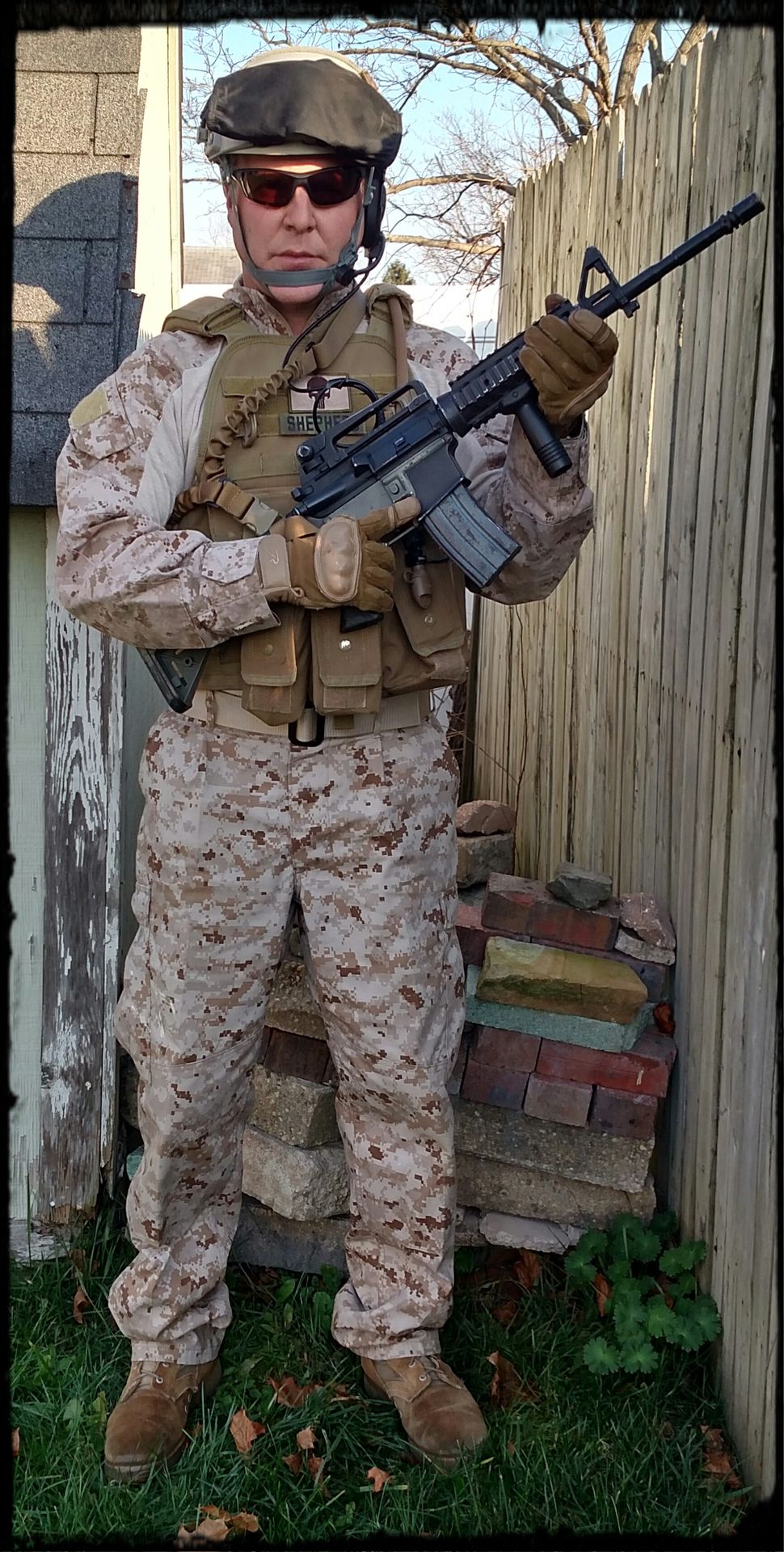
3) ALERT CARRY – When contact or visual has been affirmed or the threat is anticipated. Place the Buttstock to the shoulder or hip pocket as shown below. The Muzzle is facing downward at a 45˚ angle (can be adjusted for conditions and mobility) away from the center of the team column. The firing hand and finger are in the same place, but the thumb is on the selector switch. Make sure to point the muzzle in the direction of possible hostile contact or engagement.

4) READY CARRY – When Contact is Imminent, this allows for immediate engagement of your tango. The buttstock is again placed on the shoulder of the breast pocket. The Firing hand and trigger finger are the same as the other Carry's as is the thumb on the selector switch. The Muzzle, however, is now pointed directly at the location of the possible tango, and the sights (optics) are just below eye level. This is the phase just before firing the rifle.


AIMING
Contrary to public opinion, belief, television, and movies, aiming is not just done with one eye. Both eyes must be open. With both eyes open it allows you to see the entire situation and field before you. Your peripheral vision with the off sight eye can see any movement that can help you to choose direction, fire, and react quickly as opposed to having one eye closed.
One eye closed CREATES A BLIND SPOT and makes you more of a target than normal. Once again, since there are so many different types of optics, you need to become proficient with your optic. Whether fixed Iron sights or an RCO (Rifle Combat Optic), you need to know how to align and maintain good sight picture with your particular apparatus used.
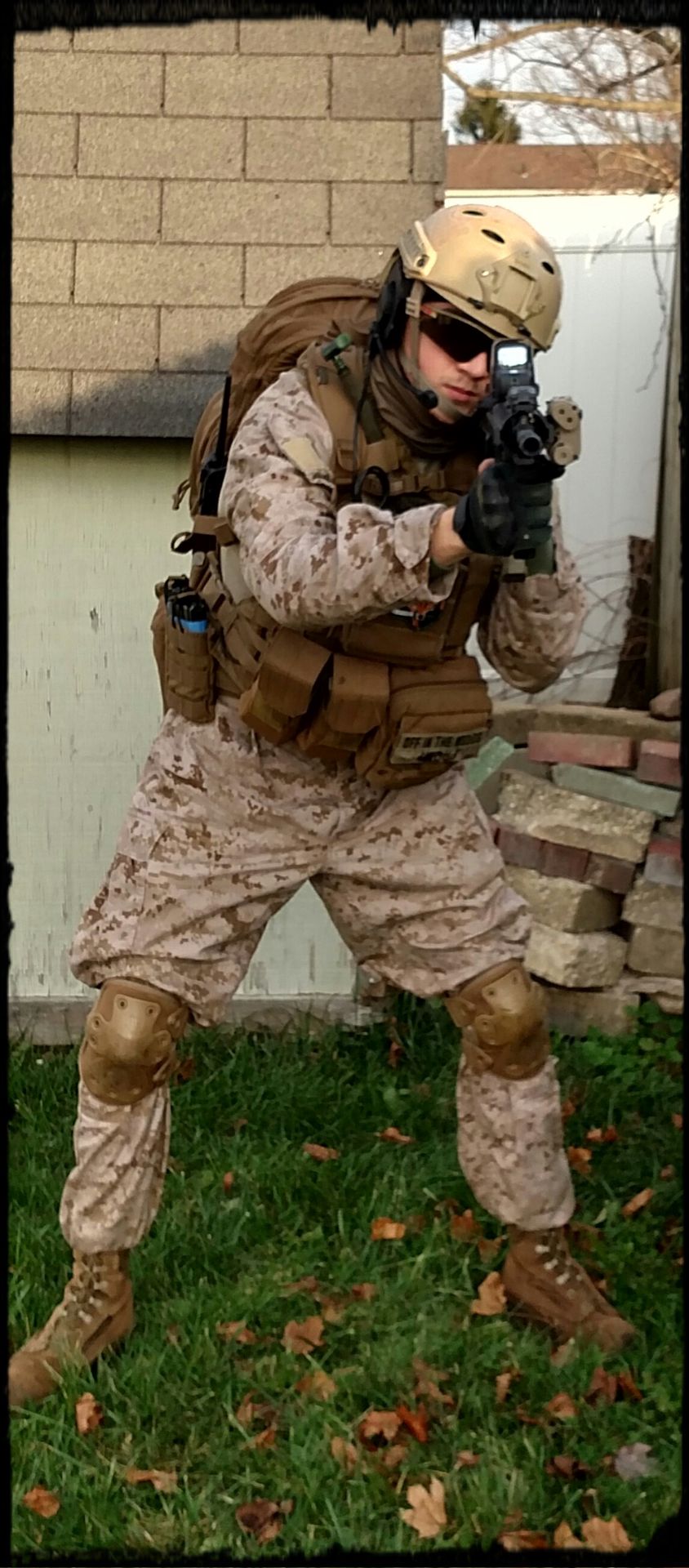
TRIGGER CONTROL
This is what separates the dead from the living, so to speak. Trigger control is the key to getting your rifle to do its job. The Marine Corps calls it the "Surprise Break". They define it as, "placing equal, gradual pressure on the trigger until the hammer falls and it surprises you."
We simply called it Rifle Shock.
There are basic movements which seem simple, but under duress can cause you to miss your target by millimeters left or right. A miss is a miss, and you can allow your tango to mirror and engage you if your trigger pull is wrong.
1) The trigger finger must be independent of the body. Only the top two joints of the finger move.
2) Do not fight the trigger. Allow the trigger to recover so that you can get into a smooth cadence of fire. Pulling back and holding the trigger back against the guard will slow your rate of fire and can cause the round to move off target.
3) Do Not Remove Finger From Trigger. IF done properly, as the trigger resets your finger will as well. It needs to be relaxed working independently of the other fingers and grip.
4) Pull Straight Back using the pad (tip) of the trigger finger, gently pull back until you are surprised at the discharge and recoil of the rifle. If you pull or push or use the digit to depress the trigger, you will fire off target.
5) Rifle Control! The more stable the rifle, the more accurate the shot. Many, who fire pistols, will have what we call a stove pipe. That is when the slide fails to fully eject the spent casing, and it sticks out of the slide like a chimney (hence its name). This is because the elbow of the pistol arm is not locked. So upon recoil, the pistol moves backward against a soft platform and the weapon cannot function properly.
6) Breath Control: YOU MUST REMAIN CALM. This begins with breathing. The Expert Rifleman will exhale, settle line - of - sight, and discharge his weapon. All of this is done in a split second.
Obviously, there is more to Mastering Your Rifle than this. As people comment and ask interrogatories I will add to this chapter and the Forum.
Semper Fi,
Billy
Speaking The Language
"Blackhawk Actual, to Shepherd two-one, Stand by for tasking (assignment)over."
"Shepherd two one, solid copy. Send your traffic." (Proceed with information.)
"Expected AQI (Al-Qaida Iraq) elements just east of the MSR (Main Supply Route). Recon in force, break... Be prepared for heavy resistance, break... ROE (Rules Of Engagement) is strict. Maintain a hard posture (be locked and loaded with situational awareness at its highest). Only engage armed targets as they appear, over."
"Solid copy on all, Shepherd two-one, out."
SEMPER FIDELIS (and other Semper's):
Semper Fidelis: Always Faithful, Motto of The United States Marine Corps
S/F: Abbreviation for Semper Fidelis when used as an end greeting in written communication
Semper Fi: Shortened version of "Semper Fidelis."
Semper Fi, Mac: "Too fuc**** bad."
Semper Gumby: Colloquialism denoting tactical flexibility and the ability to quickly adapt to changing circumstances.
Semper I: Colloquialism denoting selfish or self-centered behavior.
Semper Sometimes: Used to deride the part-time nature of service in the Marine Corps Reserve.

Bạn đang đọc truyện trên: AzTruyen.Top